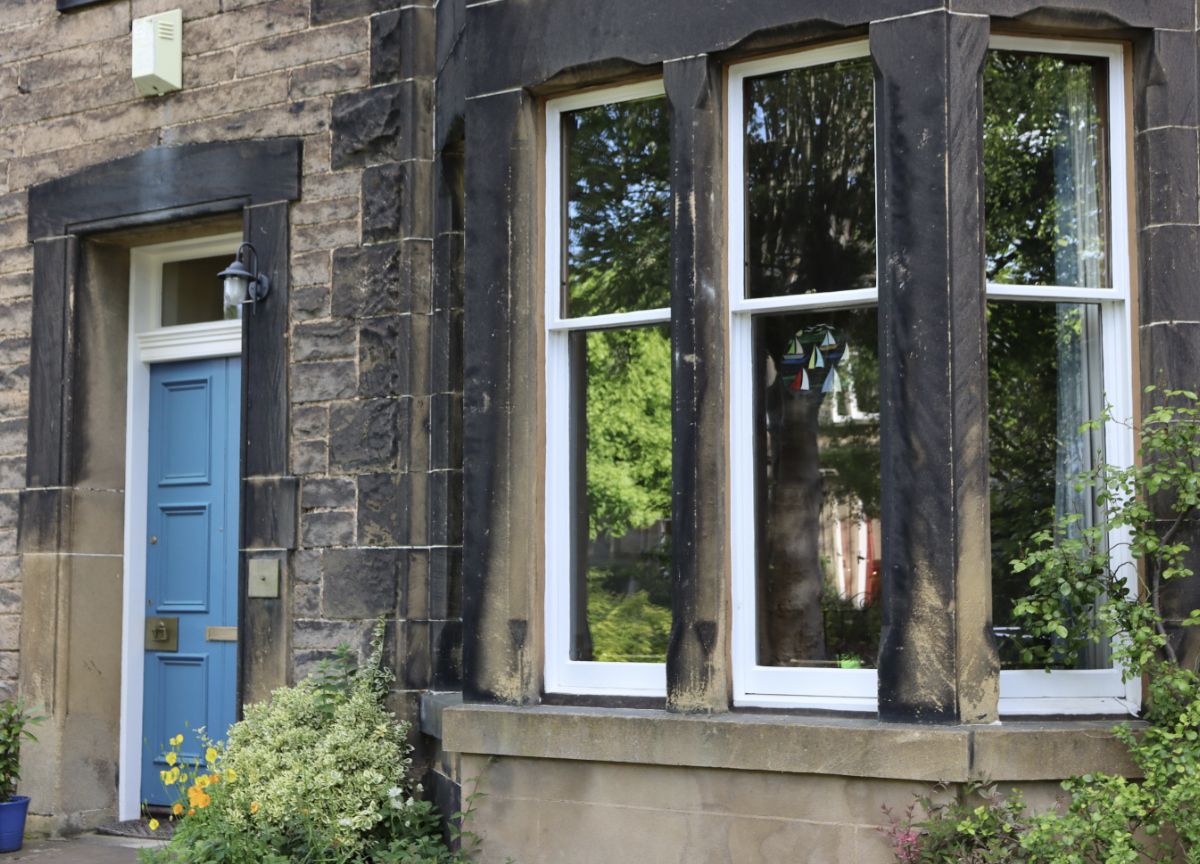- Home
- Scotland's changing climate
- Urban Housing in Scotland
- Maintenance
- Ventilation
- Airtightness
- Insulation
- Lofts - insulation at ceiling level
- Lofts - insulation at rafter level
- Cavity wall insulation
- Solid Walls: Internal vs External Insulation
- Internal Solid Wall Insulation (IWI)
- External Solid Wall Insulation (EWI)
- Timber frame retrofit
- Windows and doors
- Openings in 'historical' buildings
- Openings in 'non-historical' buildings
- Ground floors
- Suspended floors
- Suspended floors - from below
- Suspended floors - from above
- Solid floors
- Insulation materials
- Building science
- Space heating
- Solar energy
- Product Selector
Windows: Maintenance
Windows can be inspected from outside and inside if access is available. Keeping careful note/schedule of each window, check:
• the condition of adjacent stonework, especially cills beneath
• the mastic surround to the window frame
• paintwork generally
• the condition of the timber (or other material), particularly at the lower levels.
If it is possible to access the windows from inside, it may be worth assessing the following as well:
• the condition of the original timber 'safe' lintols
• the mechanisms allowing the window sashes to open and close smoothly and effectively locked
• if the windows are draughty and whether draught stripping would be beneficial
• the condition of any adjacent shutters and linings.

Many thousands of windows have been removed and thrown into landfills when they could have been repaired and maintained for a fraction of the cost. This waste is due most importantly to a lack of awareness of how simple repair can be, a preference for ‘one-size-fits-all’ solutions (even when far more expensive) and a sometimes misguided drive to improve energy performance when many options are available.
How rain damages timber windows
Suppose a painted timber window is not maintained. In that case, a combination of water running off the glass onto the lower portions, ultra-violet (UV) degradation of paint and thermal movement (warming up in the sun and contracting in the cold / at night) will eventually lead to failure of the paint coating. At this point, water will get in through cracks or flaking areas and saturate the timber. Because, initially, most of the paint remains attached and is impervious to moisture, this water cannot escape naturally, and the timber starts the decay process.
• There are timber paints available that do not form a ‘skin’ as most do, so they cannot crack or flake and allow vapour to pass through. In this way, they provide much greater protection against decay.
Suppose a painted timber window is not maintained. In that case, a combination of water running off the glass onto the lower portions, ultra-violet (UV) degradation of paint and thermal movement (warming up in the sun and contracting in the cold / at night) will eventually lead to failure of the paint coating. At this point, water will get in through cracks or flaking areas and saturate the timber. Because most of the paint remains attached and is impervious to moisture, this water cannot escape naturally, and the timber starts the decay process.
• There are timber paints available that do not form a 'skin' as most do, so they cannot crack or flake and allow vapour to pass through. In this way, they provide much greater protection against decay.
Minimal maintenance, every five years or thereabouts, will avoid this and enable the windows to last many decades if not hundreds of years. The maintenance involved can often be nothing more than a rub-down and re-coating of just the lower portions of the window. It is worth noting that it is usually only the lower portions of the window that are subject to this degradation. For this reason, regular maintenance can be minimal and inexpensive unless there are complex access issues (such as the need for scaffolding). Equally, if there has been advanced decay, then it almost always only these two lower sections, which are relatively easy to repair. Thus, timber windows are moderately high-maintenance, as often stated, but with a little effort, can be maintained for the entire service life of the building.